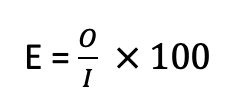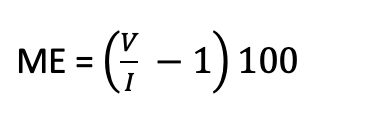🧑🏼🦯 Marketing Channel
Learn about Marketing Channel
Marketing Channels
- The course taken in the transfer of the title of a commodity constitutes its channel of distribution. (or) It is the route taken by a product in its passage from its first owner i.e. producer to the last owner, the ultimate consumer.
Important channels of distribution
- Producer or Manufacturer ➡ Retailer ➡ Consumer
- Producer or Manufacturer ➡ Consumer
- Producer or Manufacturer ➡ Wholesaler ➡ Retailer ➡ Consumer
- Producer ➡ Commission agent.
- Wholesaler is most important functionary in the chain of distribution of goods.
Definitions of Marketing Channels
- According to Moore et al.
“The chain of intermediaries through whom the various food grains pass from producers to consumers constitutes their marketing channels”.
- Kohls and Uhl have defined marketing channels as alternative routes of product flows from producers to consumers.
Factors considered while choosing a Channel
- Nature of the product
- Price of the product
- No. of units of sale
- Characteristics of the user
- Buyers and their buying units
- Low priced articles with small units of sale are distributed through retailers.
- High price special items like radios, sewing machines etc, are sold by manufactures and then agents.
- Public services like gas, electricity and transport are usually sold directly to the consumer.
Marketing Efficiency
- Marketing efficiency is essentially the degree of market performance. It is a broad and dynamic concept.
- If is the ratio of market output (satisfaction) to marketing input (cost of resources).
- An increase in ratio represents improved efficiency and vice versa.
Components of marketing efficiency
- Effectiveness with which a marketing service is performed.
- The cost at which the service is provided.
- The effect of this cost and the method of performing the service as production and consumption. i.e. effect of (1) & (2), last two are more important.
Assessment of marketing efficiency
- Technical or Physical or Operational efficiency:
- It pertains to the cost of performing a function; Efficiency is increased when the cost of performing a function
per unitof output is reduced. - Eg: Storage, processing, handling etc.
- It pertains to the cost of performing a function; Efficiency is increased when the cost of performing a function
- Pricing / Allocative efficiency:
- System is able to allocate farm products either over time, across the space or among the traders, processors and consumers at a point of time in such a way that no other allocation would make producers and consumers better off.
- This is achieved via pricing the product at different stages, places, times among different users.
- Pricing efficiency refers to the structural characteristics of the marketing system, when the sellers are able to get the true value of their produce and the consumers receive true worth of their money. The above two types are mutually reinforcing in the long run.
Emperical Assessment of Marketing Efficiency
Khols and Uhl.
- A
reduction in the costfor the same level of satisfaction or an increase in the satisfaction at a given cost results in the improvement in efficiency.
- E = Level of efficiency
- O = Value added to the marketing system
- I = Real cost of marketing
Shepherd’s formula of marketing efficiency

- ME = Index of marketing efficiency
- V = Value of the goods sold or price paid by the consumer (Retail price)
- I = Total marketing cost or input of marketing.
- This method eliminates the problem of measurement of value added.
Marketing Costs
- The movement of products from the producers to the ultimate consumers involves costs, taxes, and cess which are called marketing costs.
- These costs vary with the channels through which a particular commodity passes through.
- Eg: Cost of packing, transport, weighment, loading, unloading, losses and spoilages.
Marketing costs would normally include
- Handling charges at local point
- Assembling charges
- Transport and storage costs
- Handling by wholesaler and retailer charges to customers
- Expenses on secondary service like financing, risk taking and market intelligence
- Profit margins taken out by different agencies.
- Producer’s share in consumer’s rupee

- Where,
- Ps = Producer’s share
- PF = Price received by the farmer
- Pr = Retail price paid by the consumer
Market Margins
- Margin refers to the difference between the price paid and received by a specific marketing agency, such as a single retailer, or by any type of marketing agency such as retailers or assemblers or by any combination of marketing agencies such as the marketing system as a whole.
- Absolute margin is expressed in rupees.
Percentage marginis the absolute difference in price (absolute margin) divided by theselling price.Mark-upis the absolute margin divided by thebuying price or price paid.
Concepts of Marketing Margins
- Complex because it is difficult to follow the path of the channel for a given quantity of the channel for a given quantity of the commodity.
- It is still difficult to estimate in respect of commodities subjected to processing.
- Two methods are identified:
Concurrent margin method
- This method stresses on the difference in price that prevails for a commodity at successive stages of marketing at a given point of time.
Lagged Margin Method
- This method takes into account the time that elapses between buying and selling of a commodity by the intermediaries and also between the farmer and the ultimate consumer.
- Lagged margin indicates the difference of price received by an agency and the one paid by the same agency in purchasing in equivalent quantity of commodity.
Price Spread
- The difference between the price paid by the consumer and price received by the farmer.
- It involves various costs incurred by various intermediaries and their margins.
- Marketing costs are the actual expenses required in bringing goods and services from the producer to the consumer.
Marketing Channels
- The course taken in the transfer of the title of a commodity constitutes its channel of distribution. (or) It is the route taken by a product in its passage from its first owner i.e. producer to the last owner, the ultimate consumer.
Important channels of distribution
- Producer or Manufacturer ➡ Retailer ➡ Consumer
- Producer or Manufacturer ➡ Consumer
- Producer or Manufacturer ➡ Wholesaler ➡ Retailer ➡ Consumer
- Producer ➡ Commission agent.
- Wholesaler is most important functionary in the chain of distribution of goods.
Definitions of Marketing Channels
- According to Moore et al.
“The chain of intermediaries through whom the various food grains pass from producers to consumers constitutes their marketing channels”.
- Kohls and Uhl have defined marketing channels as …
Become Successful With AgriDots
Learn the essential skills for getting a seat in the Exam with
🦄 You are a pro member!
Only use this page if purchasing a gift or enterprise account
Plan
Rs
- Unlimited access to PRO courses
- Quizzes with hand-picked meme prizes
- Invite to private Discord chat
- Free Sticker emailed
Lifetime
Rs
1,499
once
- All PRO-tier benefits
- Single payment, lifetime access
- 4,200 bonus xp points
- Next Level
T-shirt shipped worldwide

Yo! You just found a 20% discount using 👉 EASTEREGG

High-quality fitted cotton shirt produced by Next Level Apparel